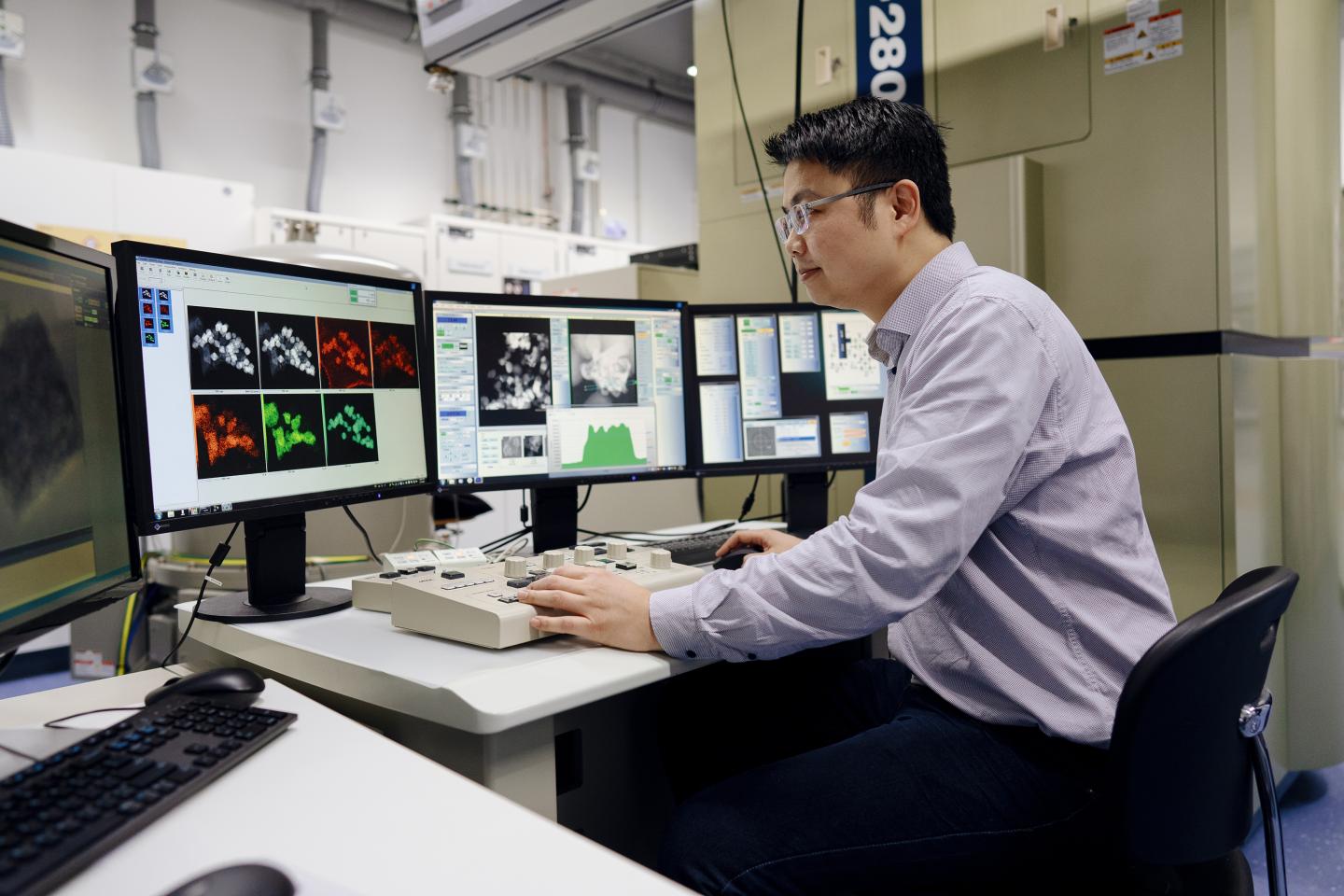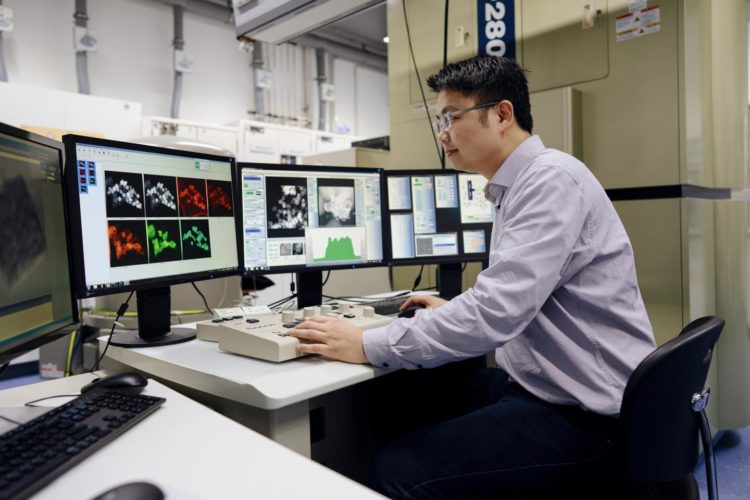Electrocatalysts can help to obtain chemicals from renewable raw materials or to use alternative energy sources. But testing new catalysts brings challenges

Credit: RUB, Kramer
Researchers at the Ruhr-Universität Bochum (RUB) and the University of Duisburg-Essen have developed a new method of depositing catalyst particles to tiny electrodes. It is inexpensive, simple and quick to perform. In order to characterize catalysts and test their potential for various applications, researchers have to fix the particles to electrodes so that they can then be examined, for example, with transmission electron microscopy.
The new method is described by Dr. Tsvetan Tarnev and Professor Wolfgang Schuhmann from the Center for Electrochemistry at RUB with Steffen Cychy and Professor Martin Muhler, RUB Chair of Technical Chemistry, as well as Professor Corina Andronescu, University of Duisburg-Essen, and Dr. Yen-Ting Chen from the Bochum Center for Solvation Science in the journal Angewandte Chemie, published online on 20 January 2020.
Wafer-thin electrodes
In transmission electron microscopy, TEM for short, a thin electron beam is sent through the sample to observe the electrochemical processes taking place at an electrode. In order for the beam to penetrate the structures, all sample components must be very thin. The diameter of the electrode to which the catalyst is applied is therefore only ten micrometers.
Depositing catalyst particles drop by drop
With earlier methods, the catalyst particles were either distributed evenly throughout the sample, i.e. even where they were not needed, or methods were used that could damage the material. Both disadvantages are eliminated with the new method, which is based on scanning electrochemical cell microscopy. The researchers fill a glass capillary with a liquid containing the catalyst particles. They then approach the capillary to the electrode onto which the particles are to be deposited. A tiny drop of the particle liquid hangs at the lower opening of the capillary.
The researchers approach the capillary to the electrode until the drop of liquid comes into contact with the electrode and closes an electrical circuit. This automatically stops the approach, preventing damage to the material. The scientists then retract the capillary, but the drop of liquid remains on the electrode. This step can be repeated as often as required. Finally, the researchers evaporate the solvent so that only the catalyst particles remain, which are now fixed to the electrode.
Suitable for many catalyst materials
“Once the methodology is established, it offers a clean, easy-to-use and variable way of applying and measuring a large number of different catalyst materials stably and reproducibly on liquid cell TEM chips,” says Wolfgang Schuhmann.
###
Media Contact
Wolfgang Schuhmann
[email protected]
49-234-322-6200
Original Source
https:/
Related Journal Article
http://dx.





